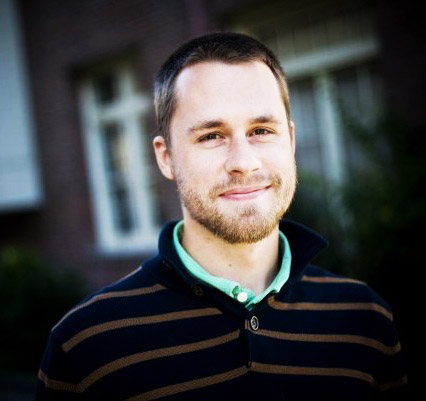This piece is part of an on-going blog series called Plurality 2.0 (watch video here). Full schedule of guest authors throughout April and May is available here.
Seth Thomas works with college students at the INN University Ministries. He coordinates their weekly gathering and mentors students in worship leading. He also does freelance web design, blogs infrequently, and tweets often. His wife, Stacy is a 4th grade teacher and they live happily in Bellingham, WA.
The Hope of (mis)understanding.
 I suppose (mis)understanding is the word play I would use to describe my perspectives on plurality. One of the most important desires of our religious dialog has to be reaching places of connection with those who we are not, based on listening, hearing, and understanding. We reach out to the one who is so not like us, so ‘other’ from us, as Christ reaches out to each of us from a place of such difference.
I suppose (mis)understanding is the word play I would use to describe my perspectives on plurality. One of the most important desires of our religious dialog has to be reaching places of connection with those who we are not, based on listening, hearing, and understanding. We reach out to the one who is so not like us, so ‘other’ from us, as Christ reaches out to each of us from a place of such difference.
We seek understanding in a way that affirms those of divergent opinions, not as right or wrong, but as heard and understood. As all are created by God, all opinions, as far reaching as they may be, are worthy of love and respect that this understanding asks of us.
In the midst of understanding, we also seek misunderstanding. It is by God’s grace that we are shown the great mysteries of the universe, the mysteries of creation, the mysteries of the resurrection, and the mysteries of our own place in the story. While we seek to understand our brothers and sisters in their differences from us, we are also propelled towards misunderstanding in a way that allows for awe, respect, reverence, and an ongoing sense of mystery even in our relationships. With misunderstanding, we are challenged to relate nonetheless, in spite of the disconnection, through the dim glass. We are challenged to embrace differences in opinion, in many cases simply because we cannot begin to see that place where another’s faith is formed and shaped.
What if it were these perspectives of (mis)understanding that were also required of us as we journey in faith? What if, in having faith, we are asked to step into a great (mis)understanding, a great (un)knowing, where on one hand, we experience the greatness of God’s character as beautifully described in Scripture and tradition while at the same time, we learn to hold more and more loosely our objective perspectives on the essence of God’s character in hopes of embracing mystery and wonder, such great pieces of faith.
One of the things we focus on with students at the INN is the idea of transitioning to the faith of adulthood. We spend a lot of time encouraging students to explore their faith within their context at college, where they encounter such diversity of opinions and backgrounds, in order to come to their own knowing and understanding of what it means to follow God. A huge part of that transition for me has been this disengaging with my perspectives God of shaped by my childhood with the hope of coming to a greater (un)knowing of God as an adult. While I never seek to lose the faith of a child, there is a great sense of wonder and pure faith that comes on the other side of this transition, a place of deep faith that is beyond simple answers and clearly articulated expositions. There is something messy and yet more rooted. Something more clear and yet more dimly seen. Something much more deeply understood and at the same time, deeply misunderstood.
Behold, a great cloud of witnesses, encountering faith through the God’s Spirit, in ongoing revelation. If plurality looks like hopeful (mis)understanding, deep and faithful connections based on knowing God and each other, then may plurality be the fabric which weaves us together.